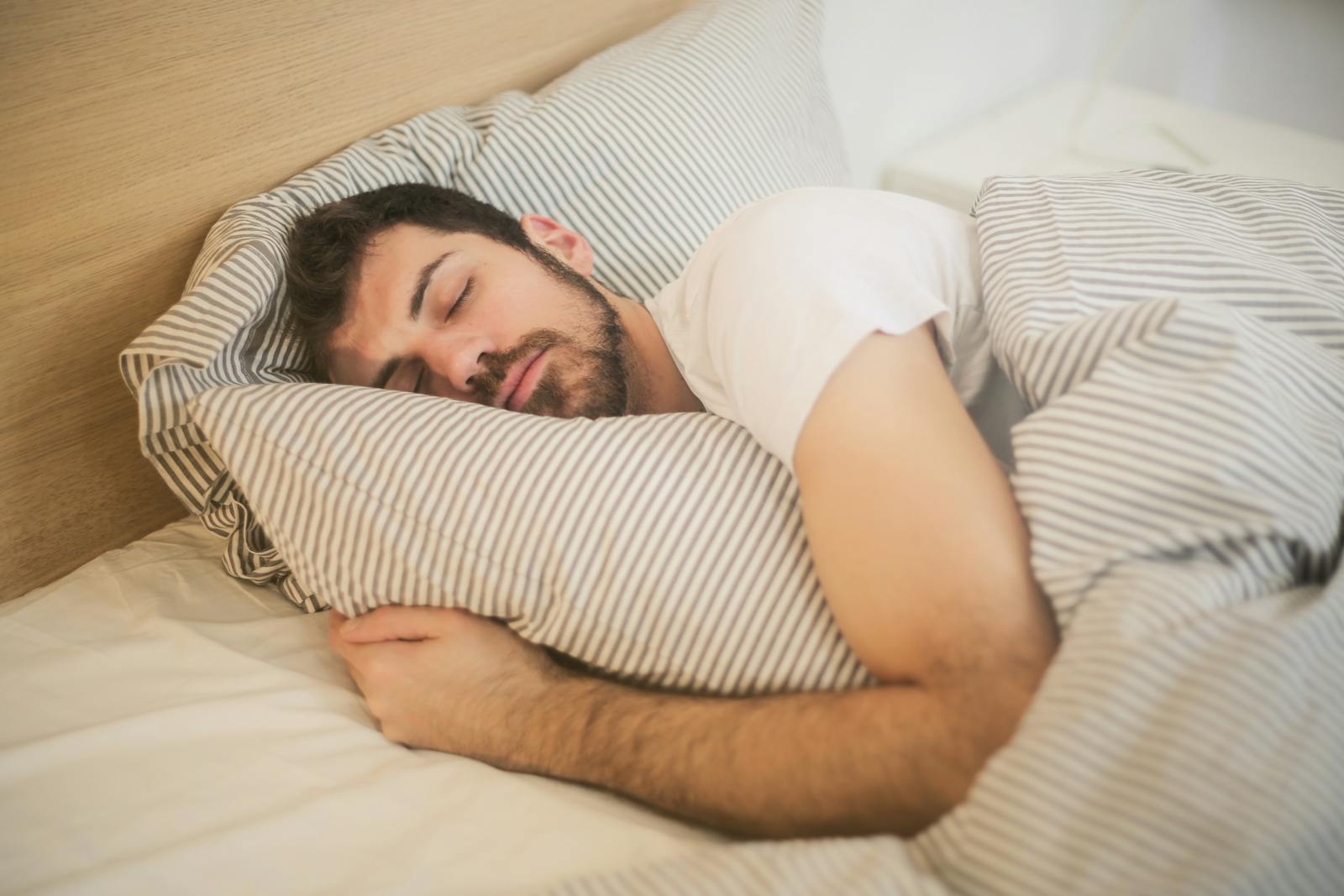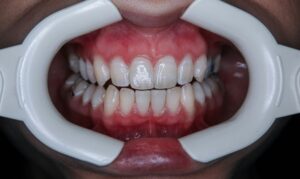Sleep is essential for physical and mental well-being, and many factors can influence the quality of your sleep. One of the most significant influences is light exposure. Whether from a lamp, nightlight, TV screen, or even streetlights outside, sleeping with lights on can interfere with the body’s natural sleep cycle and reduce the overall quality of your rest.
In this guide, we’ll explore why sleeping with lights on is detrimental to your sleep quality, how light affects your circadian rhythm, and the potential consequences of prolonged light exposure during sleep. We’ll also offer tips on creating a darker, more conducive sleep environment to promote better rest.
The Science of Sleep and Light Exposure
The relationship between light and sleep is rooted in the body’s circadian rhythm, a 24-hour internal clock that regulates sleep and wake cycles. Light plays a crucial role in this process, as it signals the brain when it’s time to be awake or asleep.
How Light Affects the Circadian Rhythm
The circadian rhythm is influenced by the suprachiasmatic nucleus (SCN), a part of the brain located in the hypothalamus that acts as a master clock, regulating the sleep-wake cycle. When exposed to natural light, particularly blue light from the sun, the SCN signals the release of cortisol, a hormone that promotes alertness and wakefulness. As daylight fades, the SCN triggers the release of melatonin, a hormone that induces sleepiness.
However, artificial light—whether from a bedside lamp, television, or streetlight—can disrupt this natural rhythm. The presence of light at night signals to the brain that it’s still daytime, delaying the production of melatonin and making it harder to fall asleep. Over time, this disruption can lead to poor sleep quality, insomnia, and other health issues related to sleep deprivation.
Why Sleeping with Lights On Is Bad for Sleep Quality
Sleeping with the lights on can have a variety of negative effects on your sleep quality. These effects range from difficulty falling asleep to long-term health issues, as light exposure interferes with the body’s ability to achieve deep, restorative sleep.
1. Inhibits Melatonin Production
Melatonin is often referred to as the “sleep hormone” because it plays a critical role in regulating the body’s sleep-wake cycle. It helps signal to the body that it’s time to rest by promoting relaxation and reducing alertness. Melatonin levels typically rise in the evening as it gets dark, preparing the body for sleep.
When you sleep with lights on, especially bright or blue light, the pineal gland in the brain reduces the production of melatonin. Even small amounts of light, such as from a digital clock or a phone screen, can inhibit melatonin production, making it harder for you to fall asleep and stay asleep throughout the night.
Key takeaway: Light exposure at night reduces melatonin levels, delaying sleep onset and preventing you from entering deeper stages of sleep.
2. Disrupts Sleep Stages
The human sleep cycle consists of multiple stages, including light sleep, deep sleep (also known as slow-wave sleep), and REM sleep (rapid eye movement). Each of these stages plays a vital role in restoring the body and mind. However, sleeping with lights on can disrupt the natural progression through these sleep stages, leading to fragmented sleep.
Exposure to light at night can prevent you from entering the deeper stages of sleep that are essential for restoration, memory consolidation, and immune function. You may find yourself waking up more frequently throughout the night or feeling less refreshed in the morning, even if you’ve spent enough time in bed.
Key takeaway: Sleeping with lights on can fragment your sleep, preventing you from reaching the restorative stages of deep and REM sleep.
3. Increases Alertness and Reduces Relaxation
Light exposure at night can also increase levels of alertness, making it more difficult for you to relax and fall asleep. Light stimulates the brain’s alertness centers, which signals the body to stay awake and active rather than transitioning into sleep.
This is particularly true for exposure to blue light, which is emitted by screens on phones, tablets, and computers. Blue light is especially effective at stimulating the brain and reducing melatonin production, which can delay the onset of sleep and decrease sleep quality.
If you have a habit of checking your phone before bed or leaving a TV on while you sleep, you may be inadvertently keeping your brain more alert and awake, even when you want to rest.
Key takeaway: Light—especially blue light—keeps the brain alert and prevents the body from relaxing, making it harder to fall asleep.
4. Leads to Poor Sleep Quality and Fatigue
Over time, regularly sleeping with lights on can lead to chronic sleep deprivation. Even if you spend the recommended 7-9 hours in bed, the quality of your sleep may be compromised by the presence of light, leading to daytime fatigue, difficulty concentrating, and mood disturbances.
People who sleep with lights on often report feeling less refreshed upon waking, even if they slept for a full night. This is because light exposure can prevent the body from completing full sleep cycles, particularly the stages of deep sleep and REM sleep that are crucial for physical and mental recovery.
Key takeaway: Sleeping with lights on reduces overall sleep quality, leading to daytime fatigue and difficulty functioning.
5. Increases the Risk of Long-Term Health Problems
Chronic exposure to light during sleep can contribute to long-term health issues. Studies have shown that disruptions to the circadian rhythm, such as those caused by sleeping with lights on, are associated with an increased risk of several health problems, including:
- Obesity: Sleep disruptions can interfere with the regulation of appetite hormones like ghrelin and leptin, which may lead to overeating and weight gain.
- Diabetes: Poor sleep quality has been linked to insulin resistance, increasing the risk of developing type 2 diabetes.
- Cardiovascular disease: Chronic sleep deprivation and circadian rhythm disruptions can contribute to high blood pressure, inflammation, and a higher risk of heart disease.
- Depression and anxiety: Consistently poor sleep quality can exacerbate mental health conditions like depression and anxiety, as sleep is critical for emotional regulation and stress management.
Key takeaway: Regularly sleeping with lights on can lead to long-term health risks, including obesity, diabetes, and cardiovascular problems.
Types of Light That Affect Sleep the Most
Not all light is equally harmful to sleep quality. Different types of light have varying effects on the circadian rhythm and melatonin production. Understanding which types of light are most disruptive can help you make better choices for your sleep environment.
1. Blue Light
Blue light is one of the most disruptive types of light for sleep because it mimics the wavelength of natural daylight, which signals to the brain that it’s time to be awake. Electronic devices like smartphones, tablets, computers, and LED lights emit blue light, which can significantly delay melatonin production and keep you awake longer.
If you use screens before bed or have electronic devices in your bedroom, the blue light they emit can keep your brain alert, making it more difficult to fall asleep.
Solution: Use blue light filters on your devices or switch them to night mode in the evening. Ideally, limit screen time at least 1-2 hours before bed.
2. Bright White Light
Bright, cool white lights, like those from overhead lights or LED bulbs, can also interfere with sleep by suppressing melatonin. These lights are particularly problematic if used in the evening or during bedtime hours, as they can mimic daylight and confuse the brain into thinking it’s still daytime.
Solution: Use warmer light bulbs (such as those labeled “soft white”) in your bedroom and avoid bright overhead lighting at night.
3. Streetlights and Outdoor Lighting
Even if you turn off indoor lights, streetlights or outdoor lighting can still disrupt your sleep if it seeps into your bedroom through windows. Exposure to light from outside can affect melatonin levels, especially if the light is bright or directed toward your sleeping area.
Solution: Use blackout curtains or shades to block external light from entering your bedroom and disrupting your sleep.
How to Create an Optimal Sleep Environment
To promote better sleep quality, it’s essential to create a dark, quiet, and comfortable sleeping environment. Here are some tips for reducing light exposure and improving your sleep:
1. Use Blackout Curtains
Blackout curtains or shades are highly effective at blocking out external light, such as streetlights or car headlights. These curtains are designed to keep your room as dark as possible, creating an environment conducive to deeper, more restful sleep.
2. Limit Screen Time Before Bed
Since blue light from electronic devices can disrupt melatonin production, it’s best to limit screen time for at least 1-2 hours before bed. If you need to use your phone or computer in the evening, enable night mode or use blue light-blocking glasses to minimize the impact on your sleep.
3. Use a Sleep Mask
If you can’t control all sources of light in your environment, consider using a sleep mask. Sleep masks cover your eyes and block out light, helping you maintain darkness even if there are unavoidable light sources nearby.
4. Install Dimmer Lights or Warm-Toned Bulbs
For bedrooms and areas where you wind down before bed, use dimmer switches or warm-toned light bulbs that emit a softer, more relaxing glow. Avoid using bright, cool-toned lights that mimic daylight, as these can interfere with your body’s natural sleep signals.
5. Consider a Red-Toned Night Light
If you need a night light for safety or comfort, opt for a red or orange-toned light. These colors are less likely to interfere with melatonin production compared to blue or white lights. A dim, red-toned night light can help you navigate in the dark without disrupting your sleep cycle.
Conclusion
Sleeping with lights on can significantly disrupt your sleep quality by interfering with melatonin production, delaying sleep onset, and preventing you from reaching deeper stages of sleep. Over time, this can lead to poor sleep quality, daytime fatigue, and an increased risk of long-term health problems like obesity, diabetes, and cardiovascular disease.
To improve your sleep, it’s essential to create a dark and relaxing sleep environment by turning off lights, limiting screen time before bed, and using tools like blackout curtains or sleep masks to block unwanted light. By reducing light exposure, you can promote a healthier circadian rhythm and enjoy deeper, more restful sleep.




